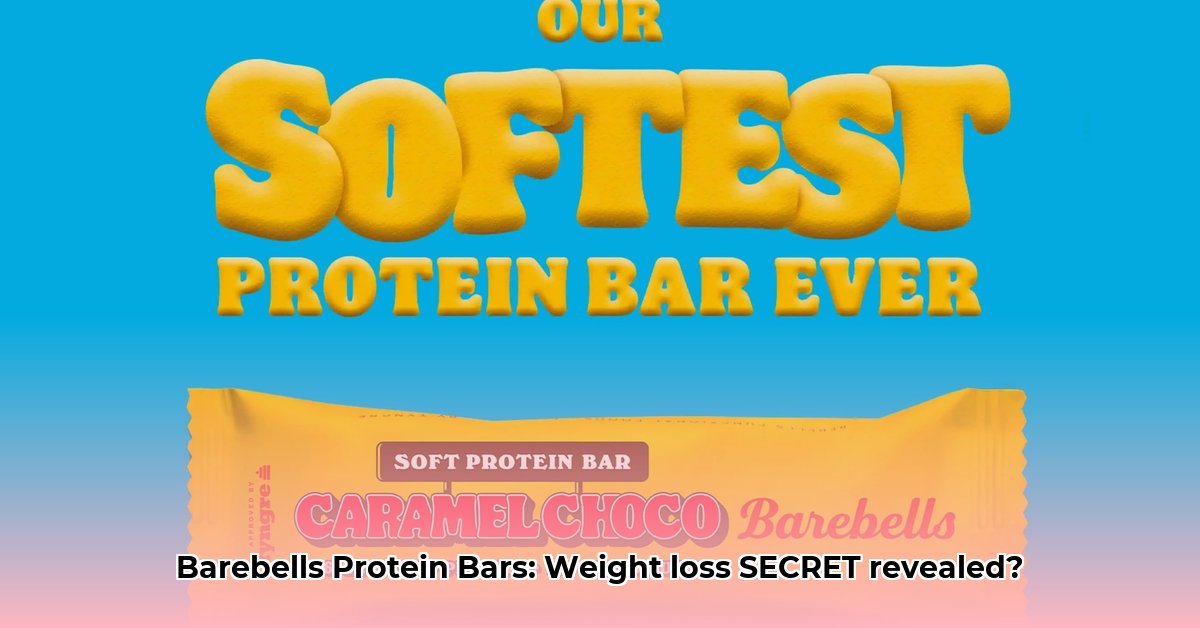
Are Barebells Protein Bars Effective for Weight Loss? A Comprehensive Review
Barebells protein bars have gained popularity, but their effectiveness for weight loss requires careful consideration. This review analyzes their nutritional profile, ingredients, and potential long-term health implications to provide actionable intelligence for consumers, manufacturers, and healthcare professionals.
The high protein content (approximately 20 grams per bar) is a positive aspect, contributing to satiety and potentially aiding weight management. However, the inclusion of artificial sweeteners like sucralose and maltitol, along with vaguely described "natural and artificial flavors," raises concerns. While some studies suggest potential long-term health risks associated with sucralose, further research is needed to fully understand its effects. Maltitol, although generally better tolerated, can cause digestive upset in some individuals. This lack of ingredient transparency prevents a complete assessment of their overall health impact.
Decoding the Macronutrient Profile: A Balanced Perspective?
While the high protein content is beneficial for weight management, the bars also contain saturated fat and carbohydrates. This combination may not align with every individual's dietary needs or goals, especially those following low-carbohydrate diets. Therefore, determining their suitability depends entirely on individual dietary requirements and weight loss strategies. It’s crucial to consider the overall macronutrient balance within the context of a complete diet. A balanced approach remains paramount for sustained weight loss and overall health. Do Barebells bars fit your dietary needs? That's the key question.
Actionable Steps for Consumers, Manufacturers, and Healthcare Professionals
For Consumers:
- Assess Individual Tolerance: Carefully evaluate personal sensitivity to maltitol and sucralose. Start with a small portion to gauge any adverse reactions. Individual responses to these sweeteners can vary significantly.
- Compare and Contrast Brands: Don't limit yourself to one brand. Compare Barebells' ingredients and nutritional information with other protein bar brands to make an informed choice. Look for products with transparent labeling and a focus on natural ingredients.
- Prioritize Ingredient Clarity: Choose bars with clearly defined, easily understood ingredients. Prioritize those with natural sweeteners and avoid vague terms like "natural and artificial flavors."
For Barebells (the Manufacturer):
- Commission Independent Safety Studies: Carry out rigorous, unbiased, independent research into the long-term effects of sucralose use in your products. Transparency regarding research findings is crucial for building consumer trust.
- Enhance Ingredient Transparency: Provide complete and detailed information of all ingredients, including flavorings and additives. Clearly stating the quantities of each component is essential for informed consumer decision-making.
- Explore Natural Alternatives: Consider reformulating products using natural sweeteners and flavorings to cater to the ever-growing consumer demand for cleaner food products.
For Regulatory Bodies:
- Strengthen Labeling Regulations: Implement stricter regulations around the labeling of artificial sweeteners and their potential long-term health impacts. This ensures consumers have access to accurate and complete information.
- Enforce Clear Ingredient Labeling: Enact guidelines to eliminate vague terms like "natural and artificial flavors," demanding clear specification of all ingredients used in food products. This fosters greater transparency and accountability.
For Nutritionists/Dietitians:
- Educate Clients on Ingredient Awareness: Inform clients about the potential drawbacks of artificial sweeteners and the importance of carefully reading food labels. Emphasize a balanced diet and moderation as key components of weight loss strategies.
- Advocate for Industry Standards: Support campaigns and initiatives promoting greater transparency and stricter regulations within the protein bar industry to ensure consumers have access to high-quality, accurately labeled products.
Risk Assessment Matrix: Weighing the Pros and Cons
| Ingredient/Component | Risk Level (Subjective) | Mitigation Strategies |
|---|---|---|
| Sucralose | High | Choose alternatives without sucralose. |
| Maltitol | Moderate | Consume in moderation; monitor individual tolerance. |
| Unclear Flavorings | Moderate | Opt for bars with clearly listed, natural flavors. |
| High Saturated Fat | Moderate | Consume as part of a balanced, overall dietary plan. |
This review offers a balanced assessment of Barebells protein bars and their suitability for weight loss. While the high protein content is a benefit, the presence of artificial sweeteners and the lack of complete ingredient transparency warrant careful consideration. Ultimately, a holistic approach to weight loss that prioritizes a balanced diet and incorporates regular exercise remains paramount for long-term success. Barebells bars, like any processed food, should be part of a broader, well-considered strategy.